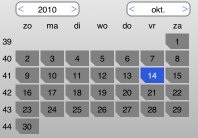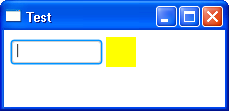JavaFX 2.0 bubblemark
Oracle has released the revamped JavaFX 2.0 on JavaOne 2011. It’s an interesting step which immediately invokes many questions. What is the target audience for JavaFX? Which technology segment does it aim at? What are the chances it will actually claim a piece of that segment? Is it any good at the segment it is aiming at? Only the future will tell the answers to all the questions. But some can be attempted to be answered today.
First of all a short summary of what I believe JavaFX 2.0 is: JavaFX attempts to be a higher performance graphics framework, with a UI layer on top, able to display different types of media.
- “Higher” means that it is not aiming at high end gaming (for example the recently released Battlefield 3 and Call of Duty Modern Warfare 3), but more at the level of platform games like Mario Bros or the fancier and animated user interfaces that some applications have lately.
- “Graphics framework” indicates that it is not a UI library in its core (like Swing or SWT), but its designed primarily for drawing, manipulating and animating shapes like circles, rectangles and lines.
- “UI layer on top” to note that it does come with a good set of UI controls, that are drawn using the graphics framework and thus can easily be made “fancy”.
- “able to display different types of media” means that there is support for playing audio or video streams.
This kind of framework is commonly known as a RIA, or rich internet application, framework.
Having established the technical intention of JavaFX, the first step would be to see if it is any good at what it’s trying to be. This means bringing out the tame racing driver, aka a common frame of reference. For benchmarking a RIA the unofficial first thing to do is throw the bubblemark test at it. (more…)




